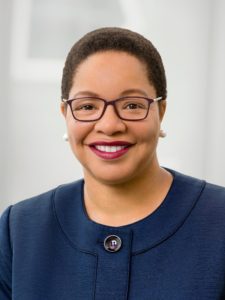Why Chief Diversity Officers (CDO) Need to Step Their Game Up
by Dr. Denise O'Neil Green | October 20, 2020 10:20 AM

Seven years ago (January 29, 2013) I did a post titled: “What is as Chief Diversity Officer (CDO)?”. I had been in my new post at Ryerson University for about five months as its inaugural, Assistant Vice President/Vice Provost of Equity, Diversity and Inclusion (EDI). As such, my mandate was to provide leadership, advocacy, and coordination for the institution such that all members of the university community have the opportunity to learn, work, and teach in an inclusive environment that enables them to strive for excellence and reach their potential. The EDI framework I advanced at the time focused on applying an EDI lens to the organization’s policies, procedures, practices and programs in the same way a Chief Academic Officer or Chief Financial Officer sets the strategic path for the organization’s academic plan or financial plan. Further, to clarify what this new emerging position in the postsecondary sector was, I articulated three (3) top characteristics: Leader, Advocate, and Coordinator.
In light of pressing issues facing universities since 2013, and now as they grapple with the challenges of this new 2020 decade, the Chief Diversity Officer in turn, must step up their game to meet the demands and expectations of their respective stakeholders and communities while successfully operating within a structure which inherently minimizes and opposes the role. That said, I am adding three (3) more characteristics to the Chief Diversity Officer (CDO) profile: Disruptor, Visionary, and Facilitator.
- A CDO is a Disruptor: CDOs are Disruptors because they are expected to challenge the status quo. While the term “inclusion” comes across as a nice sounding word that many embrace and wish to see become a reality in our postsecondary institutions, the term itself inherently implies a disruption to the status quo. Folks say that inclusion means being invited to the party and being asked to dance. However, universities often repeat the same thing over and over, expecting a different outcome. The inertia that dominates postsecondary organizations is difficult to overcome, but CDOs are positioned to point out this incongruence between organizational values and apparent contradictions that plague our bureaucratic practices, procedures, and policies. Chief Diversity Officers encounter many gatekeepers that prevent actionable steps that can bring about the much-needed change to arrive at true inclusion. The combination of persistent external forces, leveraging of formal decision-makers, and engaging influencers can help minimize the barriers to success. As a result, disaggregated EDI data can be collected, diverse faculty and staff can be hired in earnest, or curriculum privileges more than the Western canon, and is inclusive of knowledges born out of marginalized communities. Yet, in some organizations, being able to truly disrupt the status quo is compromised due to the CDO’s limited staff, resources, authority, and the ever time-consuming task of addressing “fires” (e.g. critical incidents where swift action through an EDI lens is needed). CDOs that are fortunate enough to report to either the President or Provost tend to have greater capacity to disrupt the status quo so that true inclusion can be achieved.
- A CDO is a Facilitator: Facilitation skills are essential in order to build capacity. According to the Harvard Business Review, in response to the murder of George Floyd, Black Lives Matter protests, and the shooting of Jacob Blake, there’s a growing recognition of inequality, anti-Black racism and the like, and so organizations, including universities, are hiring Chief Diversity/Inclusion/Equity Officers for the first time. But hiring a CDO doesn’t solve the problem if it’s done in isolation, without the proper infrastructure and support. In light of these challenges, being able to facilitate critical conversations around anti-racism, anti-oppression, colonialism, white privilege, and different forms of marginalization etc. normalizes those discussions, laying the foundation for potential change; the CDO needs to facilitate important partnerships with offices throughout the organization to build capacity one would not otherwise have to realize changes that need to happen. Furthermore, building partnerships with marginalized communities to facilitate real inclusion is paramount.
- A CDO is a Visionary. Being a Visionary is typically a role attributed to the President, Chancellor, or CEO. Nonetheless, the CDO must also have a vision for the organization to strive towards “inclusive excellence” (PDF linked), a term used by the American Association of Colleges and Universities (AACU) in a series of three reports published in 2005 in response to the 2003 U.S. Supreme Court ruling on using race conscious admissions. “Inclusive excellence” is wording often used to signify greater acceptance and inclusion of students, faculty, and staff from historically under-represented and marginalized groups. While this concept has been around for over 15 years, universities are still grappling with how to weave it into the fabric of the organization’s culture. The CDO’s vision for making “inclusive excellence” a reality rests upon equity, diversity, inclusion, and human rights values being at the foundation of university life and translating their application into action. This is where the CDO’s EDI action plan is vital for the university to galvanize all members of the community to execute the vision and finally “walk the talk”.
While there is much more that can be said about the Chief Diversity Officer, the role is even more vital than when I first wrote about it in 2013. Its placement within an organization can dictate its potential success or utter failure. Although it is no longer new to the postsecondary education sector, it continues to be fraught with obstacles, but, if implemented well, EDI and human rights can be the spark to disrupt and facilitate a vision to finally achieve inclusive excellence.
Source URL: https://institutionaldiversityblog.com/why-chief-diversity-officers-cdo-need-to-step-their-game-up/